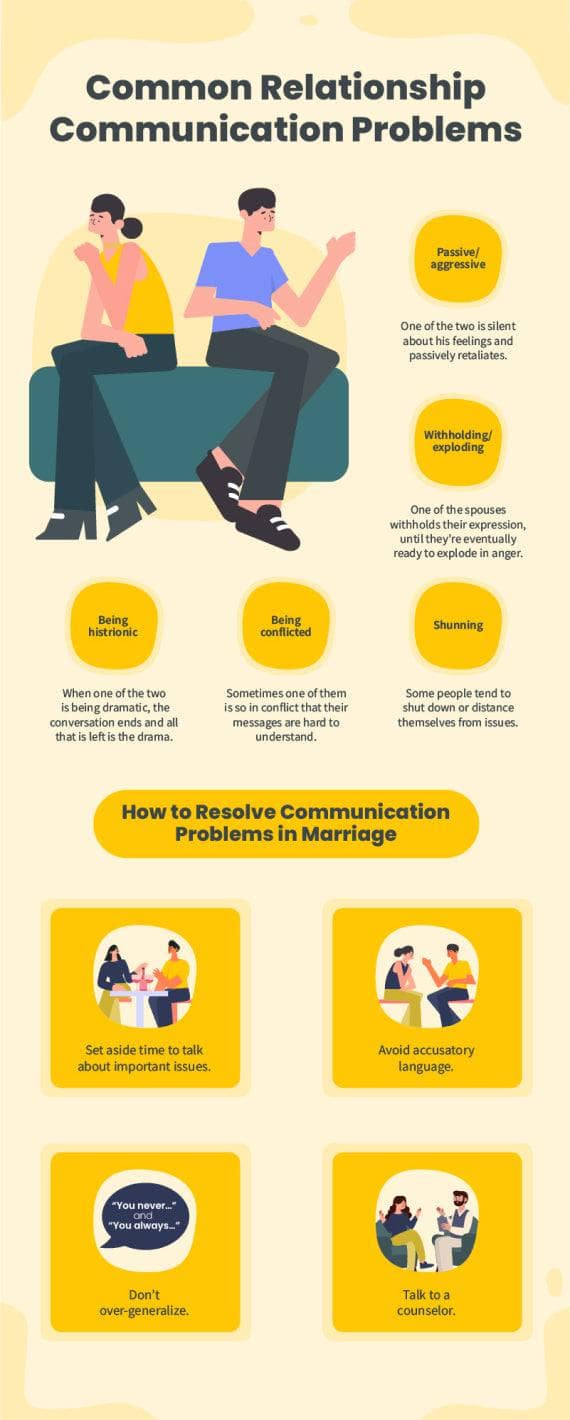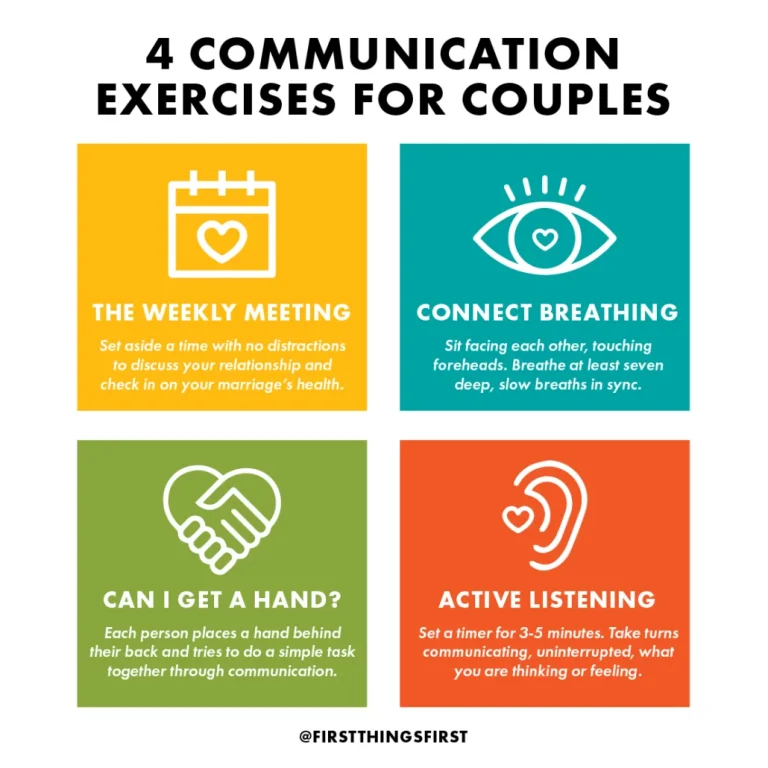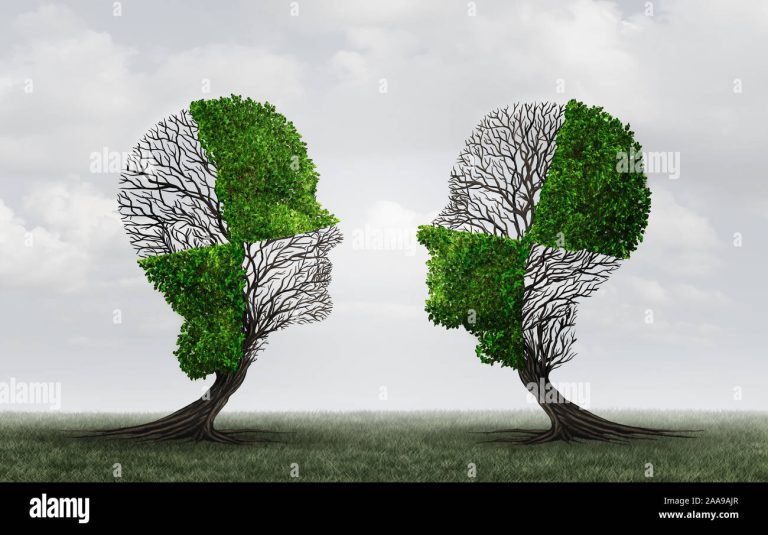Common Relationship Communication Problems: Overcome Them
Communication is key in any relationship. Yet, many couples face challenges.
Misunderstandings can lead to conflicts and stress. Why do these problems occur so often? Relationships thrive on communication, but everyone has different styles. What seems clear to one might confuse another. This mismatch can cause tension. Also, emotions play a big role.
Sometimes, feelings cloud judgment. Words spoken in anger might hurt deeply. Trust and openness are vital for healthy communication. When these are missing, issues arise. Many couples struggle with expressing needs. Some avoid difficult topics, fearing conflict. Others might not listen well. These gaps create distance. Understanding common communication pitfalls can help. Recognizing them is the first step. Once identified, solutions become clearer. Strengthening communication is crucial. It builds stronger, happier relationships.
Communication Breakdowns
Communication is the bedrock of any healthy relationship. Yet, breakdowns occur frequently. Misunderstandings and lack of clarity can lead to conflict. People often find themselves misinterpreting intentions. This can create unnecessary tension and distance. Understanding these breakdowns can help in resolving issues efficiently.
Identifying Signs
Recognizing the signs of communication breakdowns is crucial. Do you often feel unheard? Does your partner frequently misinterpret your words? These are common signs. Another sign is when conversations end in arguments. Silence or avoidance can also indicate a problem. Recognizing these signs early can prevent further issues.
Reasons For Misunderstandings
Misunderstandings often arise from assumptions. People assume their partner understands their needs without explanation. Different communication styles can also lead to confusion. For instance, some prefer direct speech, others are more indirect. Language barriers and cultural differences also contribute. Recognizing these factors helps in addressing misunderstandings effectively.

Credit: www.danabehavioralhealth.org
The Impact Of Technology
Technology shapes how we communicate in relationships today. Smartphones, social media, and instant messaging connect us instantly. While these tools help, they also create challenges. Technology can enhance or hinder communication. It changes how we interact and perceive messages.
Digital Miscommunication
Texting often lacks tone and emotion. Misunderstandings arise easily. A simple message can convey unintended feelings. Emojis help, but don’t replace real emotions. Over-reliance on digital communication can create gaps. Misinterpretation leads to confusion and conflict. Clarity gets lost in translation.
Balancing Virtual And Real
Finding balance between online and face-to-face interactions is crucial. Virtual conversations are convenient but lack depth. Real-life interactions foster genuine connection. Technology should complement, not replace, personal moments. Prioritizing in-person talks strengthens bonds. Genuine connection thrives offline.
Listening Skills
Effective communication is key in any relationship. Yet, many face challenges with listening skills. Understanding and improving these skills can help strengthen your bond. Listening is more than just hearing words. It involves understanding and responding appropriately. This can prevent misunderstandings and build trust.
Active Listening Techniques
Active listening means fully focusing on the speaker. Show genuine interest in their words. Use body language to convey engagement. Nod your head or maintain eye contact. Reflect on what they say. Paraphrase their message to show understanding. Ask questions to clarify points. This shows you value their opinion.
Avoiding Interruptions
Interruptions can disrupt communication. They make the speaker feel undervalued. Wait for pauses to share your thoughts. This respects their speaking time. Practice patience. Let the speaker finish before responding. This encourages a more open dialogue. It shows you respect their perspective.

Credit: infografolio.com
Expressing Emotions
Expressing emotions is crucial for healthy relationships. It helps partners connect deeply. But many struggle with this aspect. Some fear judgment or rejection. Others lack the skills to convey feelings. Misunderstandings arise when emotions aren’t shared clearly. This can lead to distance between partners.
Verbal Vs Non-verbal Cues
Words are powerful. They express thoughts and feelings directly. But not everyone communicates verbally. Some rely on non-verbal cues. Body language, facial expressions, and gestures reveal emotions. A smile can show happiness. Crossed arms might indicate discomfort. It’s important to understand both methods. This prevents miscommunication.
Creating Safe Spaces
Feeling safe encourages open expression. Partners should create environments where emotions are welcome. Trust is key. Listening without judgment fosters comfort. Encouraging honesty builds confidence in sharing feelings. Safe spaces reduce fear of vulnerability. This strengthens the emotional bond.
Conflict Resolution
Frequent misunderstandings often lead to conflicts in relationships. Poor listening skills and unclear expressions create barriers. Open, honest communication can bridge these gaps, fostering understanding and harmony.
Conflict resolution is vital in nurturing healthy relationships. Misunderstandings and disagreements are natural, but how you handle them determines the strength of your bond. Effective conflict resolution involves open communication, empathy, and a willingness to find solutions. Let’s dive into some practical strategies that can enhance your ability to resolve conflicts with your partner.Finding Common Ground
Finding common ground is the first step in resolving any conflict. It requires both parties to listen actively and understand each other’s perspectives. When you genuinely listen, you show that you value the other person’s feelings and opinions. Imagine you’re arguing over weekend plans. Instead of insisting on your idea, ask your partner why their suggestion matters to them. You’ll often find that there’s a shared interest underlying the surface disagreement. By focusing on these mutual interests, you can create a solution that satisfies both parties.Healthy Compromise Strategies
Healthy compromise is about giving and taking, ensuring both partners feel respected and heard. It doesn’t mean one person always gives in; instead, it’s about finding a win-win situation. Consider your relationship as a two-way street. If both of you are unwilling to budge, you’ll find yourselves stuck in a gridlock. Try setting clear boundaries and expressing your needs without blaming. For instance, say, “I need time to unwind after work, but I’m open to spending the evening together afterward.” When was the last time you compromised on something important to you? Reflect on how it affected your relationship. Compromising doesn’t mean losing; it often strengthens your connection by showing flexibility and understanding. Conflict resolution is an ongoing process in any relationship. By finding common ground and employing healthy compromise strategies, you can turn potential disagreements into opportunities for growth and connection. How will you approach your next conflict?
Credit: infografolio.com
Frequently Asked Questions
Why Am I Struggling To Communicate With My Partner?
Communication struggles often stem from unresolved conflicts, differing communication styles, or lack of emotional connection. Prioritize active listening and empathy. Address issues honestly and openly to improve understanding. Seek professional help if needed. Strengthening communication can lead to healthier relationships.
What Are Unhealthy Communication Patterns In Relationships?
Unhealthy communication patterns include criticism, defensiveness, stonewalling, and contempt. These habits create tension and misunderstanding. Frequent interrupting and ignoring also harm relationship dynamics. Healthy communication fosters understanding and connection.
Is It Normal To Have Communication Issues In A Relationship?
Yes, communication issues are common in relationships. People have different communication styles and preferences. It’s essential to address these issues openly. Effective communication fosters understanding and strengthens bonds. Prioritize listening and expressing feelings honestly. Seeking professional help can also improve communication dynamics.
Conclusion
Solving communication issues helps relationships grow stronger. Talk openly. Listen carefully. Understand each other’s feelings. Practice patience and empathy. Small changes can make a big difference. Avoid assumptions and judgments. Use clear and kind words. Regular check-ins keep you connected.
Healthy communication builds trust and respect. Everyone deserves to feel heard and valued. Open dialogue creates a safe space. Remember, no relationship is perfect. Effort and understanding make it better. Keep learning and adapting. Strong communication is the key. It nurtures love and connection.
Let your relationship thrive.




